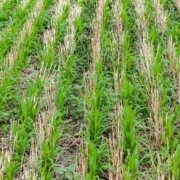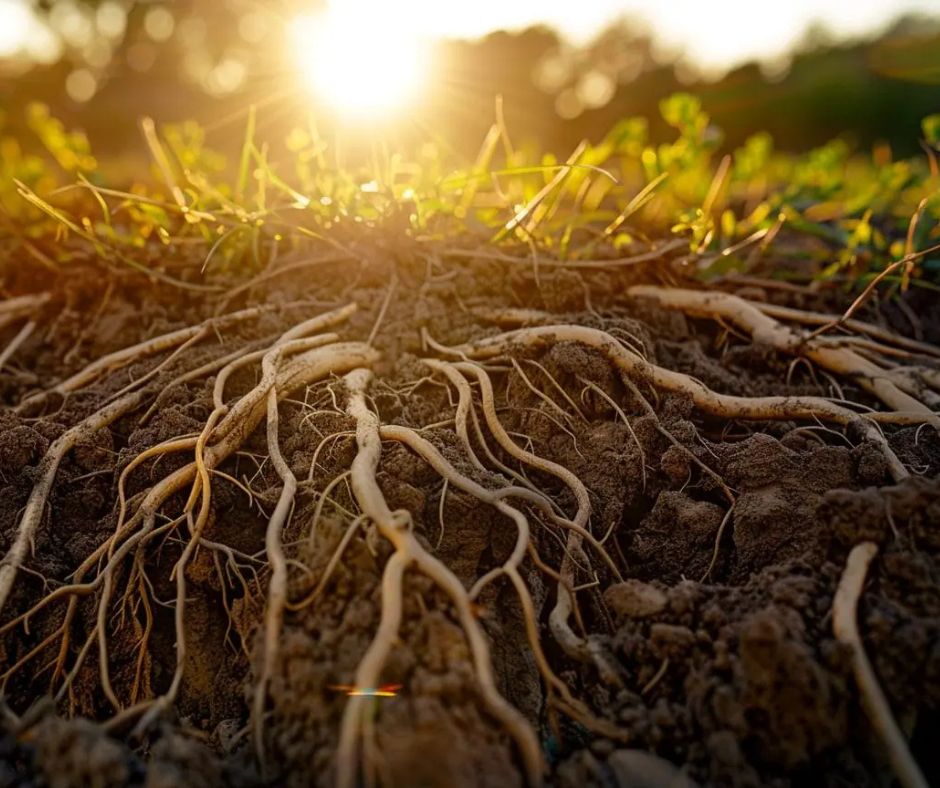As we watch the skies for autumn rain and hopefully the kickstart of another winter season, there’s no question that many farmers are faced with important decisions around input costs and risk. This blog speaks directly to the efficiency of your existing soil nutrition program, to offer another layer of knowledge to helping with some of those risks and provide a couple of options to better understanding your soils.
Soil Biology – and its importance coming out of a drought
Perhaps one of the biggest challenges with soil management is that the soil’s important parts aren’t just physical, they’re also biological. For most biological components, you can’t see them without a microscope, which is pretty much why – in discussions with many farmers at field days especially – we refer to it as the ‘soil microbiology’ and make repeated reference to the ‘soil microbiome’.
The soil microbiome is a ‘sphere’ of the soil, the top soil layers where plant roots mostly reside. It includes biology critical to the plant soil relationship and involves microorganisms such as bacteria, fungi and protozoa. These living things collectively play a key role in breaking down and cycling nutrients (changing their form) making them ready for plant uptake as well as building resilience in the soil to withstand periods of stress. Healthy soils require healthy soil biology. It’s not just direct biological benefits though, as respiring microorganisms that use and exchange oxygen around the microbiome are a major contributor to improving soil structure as well.
Every farmer knows that when they apply granular fertilisers, those nutrients need to be broken down before they are absorbed by the plant roots. There is also general acceptance that ‘the microbes’ break it all down, though there is mixed understanding around what affects the rate or efficiency of that breakdown, or how healthy soils provide a kick start to emerging seedlings to grab hold of available moisture as soon as they can.
Your Soil is a Factory
The way to think about it, is as a system. At its simplest form, for instance, we know sugarcane can be turned into rum, or barley into beer. But we’re also smart enough to know that there are a stack of things that happen in that process, in that ‘factory of change’, that we’ve never really bothered to understand as it’s someone else’s job.
But soil management is different. It is your job. And your most important job. Get it right, and it works for you while you sleep. Limit it, and your yield will also be limited.
So – consider for a moment – what if, all this time, you’ve been asking the wrong question?
Instead of searching for the perfect fertiliser – synthetic, granular or otherwise, what if your most limiting factor, the most important question all along, is: ‘what is missing in my soil’s biology’?
And more than that, what might be the biggest limiting factor with my biology coming out of an extended dry spell or drought?
Where is my soil factory lacking the right bits?
What’s at risk?
Let’s look at a few reasons why the question is a fundamental part of being a food and fibre producer, how the soil microbiome drives ultimate soil productivity, regardless of the quantity, efficiency, or quality of your fertiliser.
1. Nutrient Cycling
Drought pretty much always disrupts the normal cycling of nutrients in soils. A robust soil microbiome can quickly recommence the decomposition of organic matter and carry out mineralisation and other processes. In mineralisation, it’s microorganisms that break down synthetic fertiliser components into forms that plants are able to absorb. For example, urea is converted by urease-producing bacteria into ammonium ions, which are then available for plant uptake. The question is, do you have the right biology balance to best support that urease-producing bacteria?
2. Soil Structure and Water Retention
A healthy microbiome contributes to soil structure by forming aggregates, improving water infiltration and retention. This is crucial after a drought, as improved soil structure helps the soil hold more water and reduces erosion. But if your current soil biology is lacking, so too is your structure.
3. Symbiotic Relationships
Mycorrhizal fungi, a critical component of the soil microbiome, form symbiotic relationships with plant roots, increasing their surface area and enhancing water and nutrient uptake, vital after a drought when roots are stressed. But mycorrhizae need sugars to be able to fully develop – usually via the plant. How can we kick start mycorrhizal activity?
So where do biostimulants come in to support your natural soil processes?
A biostimulant is a product that stimulates those ‘processing stages’ of the factory in your soil, giving life to all the things you can’t see, boosting their health, kick-starting normal biological functions.
- The Right Fuel for the Factory
Converte’s products comprise not only perfectly balanced levels of trace elements and macronutrients to support soil biological functions, but also food sources to enable naturally occurring microbes in your soil to flourish. Lift the lid on the container and smell the molasses. That’s sugar for energy for bacteria. There are also other components that are critical to the development of your natural enzymes so important for nutrient cycling.
- Growth Promotion
Converte biostimulants comprise plant hormones or their precursors like humic acids, fulvic acids, and seaweed extracts that act as a catalyst for the breakdown of synthetic fertilisers.
- Stress Tolerance
Converte biostimulants enhance the soil biological processes that support an increase in plant resilience to stress conditions that are so common post-drought, such as osmoregulation and antioxidant activity.
- Microbial Activity
Converte biostimulants boost the microenvironment that allows soil microbial population to grow.
What are your options?
First and foremost, in all likelihood you already understand a lot about your soil. You know that certain parts of your property, certain parts of a paddock, have always performed better than others, either evidenced by eye, or backed up by the yield map. But maybe in some cases, you don’t really understand why.
Maybe you’ve done your soil tests and found little variability in chemical and physical properties of the soil. And maybe you’re still scratching your head.
The fundamental is this. Your soils were once biologically very healthy, very much in balance with the plant growth it supported. And over time, synthetic fertilisers were added with amazing results, addressing phosphorus deficiency and boosting yield.
At the same time though, those biological components of the soil that hate synthetic fertilisers and the highly concentrated additives, like tear gas to a human, become diminished in number. And the soil system, the processing factory underground, became largely inefficient and depleted and to get your way around the inefficiency, even more external fertilisers were added, killing off more biology in the process.
Your option is to trial a couple of strips in your paddock adding components that directly speak to those natural biological processes. And commit to a couple of years, because in year 1, your soils will be better, but definitely still recovering.
But don’t stop there, also try a few strips of your paddock with less synthetic fertiliser plus the biostimulants and see if the yield results are different. Focus on the gross margin of that strip instead of just the yield. We have customers who have done exactly that, now after a couple of years, growing crops at fertiliser rates as low as 40% of what they once were, plus the addition of the biostimulant, and miles in front financially.
You have to work out what works for your soil. If you speak to someone whose livelihood depends on selling fertiliser to you, don’t expect them to support you using less. But have a crack for yourself and see if the enormous natural potential of your soil might be re-invigorated. If it works for you, you will not only be using less synthetic, you’ll be needing less of our product too as the natural processes in the soil will take over.
We have universal soil applied products like Plantfood, products dedicated to low carbon soils like BioRestore, seed coatings to kick start seedling development like Seed Primer and ReNue – our product designed to address deficiencies during the growing season and applied as a foliar.
There has to be a better option. Reclaiming your soil’s original, natural potential, regenerating its natural features, is the key to lower input farming. Applying products that speak the same language as those features is a really good thing to consider.
Reach out to me direct if you have any questions!





